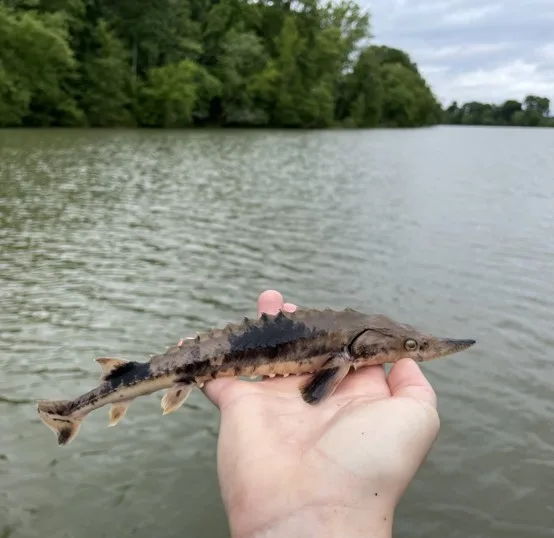Lake sturgeon were once abundant in Georgia's Coosa River before disappearing altogether. Now, an initiative to bring them back is showing major progress, according to a new study from the University of Georgia.
The lake sturgeon's lineage can be traced back millions of years, all the way to the time of the dinosaurs. But due to a mix of pollution and overfishing, they were completely wiped out in the Coosa River.
In 2002, the Georgia Department of Natural Resources began a project to bring these ancient fish back. Every year, eggs from lake sturgeon in Wisconsin were brought to Georgia before being hatched and released into the Coosa River.
UGA researchers were tasked with monitoring the project's progress, conducting an intensive netting study to capture and tag as many fish as possible.
"There was kind of a big question mark as to whether fish with the genetics of fish from up north would survive," said Martin Hamel, lead author of the study and an associate professor in UGA's Warnell School of Forestry and Natural Resources. "And even if they did survive, would they be able to reproduce on their own and have a self-sustaining population?"
The scientists now believe they have the answer.
"Not only are these fish surviving, but we're showing evidence that they are capable of reproducing and that the young are able to survive on their own."

Lake sturgeon continued hatching even when stocking stopped
The goal of the reintroduction project was to have the lake sturgeon reproduce without the aid of stocking, but measuring progress had its challenges. On average, male lake sturgeon don't reach maturity until they're 13 to 15 years old. Females take even longer to mature.
That means it takes a long time for lake sturgeon to reproduce. The annual stocking of the Coosa River makes it even more difficult to determine if lake sturgeon are procreating on their own.
But in 2020, stocking halted due to the COVID-19 pandemic.
It doesn't necessarily mean that the population has recovered, but it's definitely a step in the right direction."
-Martin Hamel, Warnell School of Forestry and Natural Resources
In 2022 and 2023, UGA researchers sampled sections of lake sturgeons' fins to estimate the fishes' ages and gauge the progress of the reintroduction project. The age of some lake sturgeon suggested that they were hatched in 2020 - a year with no stocking. This was an unexpected outcome that would have never been observed without the disruption from the pandemic.
"That was kind of the smoking gun for confirming that these fish were reproducing in the wild on their own, which really is a huge benchmark for recovery," said Hamel. "It doesn't necessarily mean that the population has recovered, but it's definitely a step in the right direction."
Researchers plan to continue monitoring sturgeon recovery
The researchers plan to revisit this method in a few years to see if natural reproduction is still taking place. For Hamel, it's critical that these fish be saved.
"They're really kind of a charismatic, unique fish, and they've been around for a really long time. They're an integral part of the aquatic ecosystem," said Hamel. "I feel privileged to be able to study them in areas where they were historically found and, for this particular project, being able to repopulate this previously lost population."
The study was published in the North American Journal of Fisheries Management and co-authored by Matthew Phillips, Savannah Perry, Brian Irwin and John Damer.






